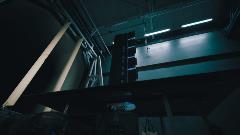Fundamentals of Aeroelasticity: From Basics to Application

Instructed by experts from Delft University of Technology
- Learn about the fascinating interaction between aerodynamics, structures and control, their modelling challenges, and their impact on the aircraft behavior.
- All students will receive an AIAA Certificate of Completion at the end of the course
OVERVIEW
This course will provide a condensed introduction to aircraft aeroelasticity from fundamentals to application. Aeroelasticity studies the interaction between structural elasticity, structural dynamics, and steady/unsteady aerodynamics. The course will touch upon all relevant aspects of aeroelasticity ranging from the fundamentals of aeroelastic modeling and phenomena to larger-scale aeroelastic modeling of aircraft. Topics such as aerodynamic and structural models tailored towards aeroelastic calculations, interpolation methods to couple aerodynamics with structures, and aeroelastic control and nonlinearities are covered.
Aeroelasticity represents an integral discipline in aircraft design facilitating static and dynamic loads and aircraft aeroelastic stability assessment. With the efforts to make aviation more environmentally friendly, aeroelasticity is gaining importance in airframe structural optimization to make the aircraft as lightweight as possible. This renders more flexible aircraft and hence more susceptible to aeroelastic phenomena. In this context, aeroelasticity is employed in several fields such as flexible aircraft handling qualities assessment and control, maneuver and gust load alleviation, flutter suppression, and performance optimization.
The goal of this course is to provide you with an essential understanding of aeroelasticity and the basic tools to apply it, such that you can use this knowledge to model aeroelastic problems and interpret aeroelastic response and stability solutions. The course will not go into advanced detail but will provide you with an understanding of the important aspects of the aeroelasticity field.
LEARNING OBJECTIVES
- Explain the importance of aeroelasticity in aerospace vehicle analysis and design.
- Understand the static and dynamic aeroelastic stability and response phenomena.
- Derive the governing aeroelasticity equations using energy methods.
- Apply the governing aeroelasticity equations to solving the aeroelastic stability and response problems.
- Create an interface between aerodynamic and structural domain comprising an aeroelastic problem.
- Apply stability and control of an aeroservoelastic system.
- Assess the impacts of nonlinearities on the stability and responses of an aeroservoelastic system.
- See full course outline below
AUDIENCE
- Professionals working in the aerospace sector related to the field of aeroelasticity who want to get more insight into the bigger picture.
- Aerospace engineering academics with knowledge peripheral to the field of aeroelasticity who are looking to expand their frontiers.
- Senior BSc students, MSc students and PhD candidates in aerospace or mechanical engineering who want to learn more about aeroelasticity.
- Learners should have prior knowledge on subsonic aerodynamics, structural vibrations, linear control theory and basics of programming (Python will be used in the course, a getting started tutorial will be provided to be studied prior to the course if needed)
COURSE INFORMATION
Type of Course: Instructor-Led Short Course
Course Level: Fundamentals
Course Length: 2 days
AIAA CEU's available: Yes
- Introduction of the typical section.
- Derivation of the governing equations for the typical section.
- Derivation of steady, quasi-steady and unsteady aerodynamic models for the typical section.
- Aeroelastic response phenomena: gust response, static and dynamic loads.
- Aeroelastic stability behavior: flutter and divergence phenomenon and calculation methods.
- Structural models for aeroelasticity, Hamilton’s principle to derive the linear multiple degree-of-freedom equations of motion.
- Moving from physical space to modal space.
- Modal selection techniques to reduce the modal truncation error
- Coupling of structural and aerodynamic models.
- Introduction of aeroelastic nonlinearities (Structural, aerodynamic, control surface related nonlinearities.
- Analysis methods of nonlinear aeroelastic systems
- Nonlinear aeroelastic phenomena (limit cycle oscillations, intermittent flutter, bifurcation of static and stationery solution)
- Aeroservoelastic response phenomena: control effectiveness and reversal
- Equations of motion of a typical wing section with a servo actuation
- Stability analysis of an aeroservoelasticity system
- Control design and analysis of an aeroservoelasticity system
In order of teaching:
AIAA Training Links
For information, group discounts,
and private course pricing, contact:
Lisa Le, Education Specialist (lisal@aiaa.org)
